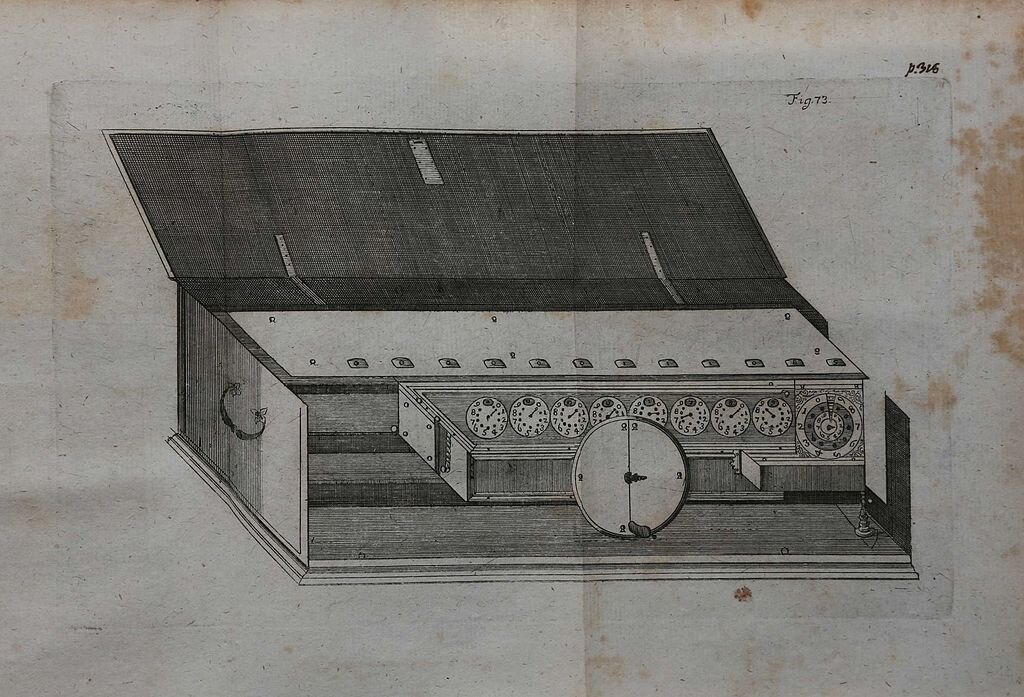
The Factorial Notation | Christian Kramp | 1808
“I have given it the name 'faculty'. Arbogast has substituted the name 'factorial' which is clearer and more French. In adopting his idea I congratulate myself on paying homage to the memory of my friend.”

How Modern Mathematics Emerged From a Lost Islamic Library | BBC Future
“The House of Wisdom was destroyed in the Mongol Siege of Baghdad in 1258 (according to legend, so many manuscripts were tossed into the River Tigris that its waters turned black from ink), but the discoveries made there introduced a powerful, abstract mathematical language that would later be adopted by the Islamic empire, Europe, and ultimately, the entire world.”

“Let us Calculate!” | Public Domain Review
“There was a resurgence of interest in Leibniz’s role in the history of computation after workmen fixing a leaking roof discovered a mysterious machine discarded in the corner of an attic at the University of Göttingen in 1879. With its cylinders of polished brass and oaken handles, the artefact was identified as one of a number of early mechanical calculating devices that Leibniz invented in the late seventeenth century.”

Inside the Secret Math Society Known Simply as Nicolas Bourbaki | Quanta Magazine
“Bourbaki began in 1934, the initiative of a small number of recent ENS alumni. Many of them were among the best mathematicians of their generation. But as they surveyed their field, they saw a problem. The exact nature of that problem is also the subject of myth.”

How Storytellers Use Math ( Without Scaring People Away) | Literary Hub
Dan Rockmore on Infinite Powers by Steven Strogatz and The Weil Conjectures by Karen Olsson.

When Math Gets Impossibly Hard | Quanta Magazine
“Mathematical impossibility is different. We begin with unambiguous assumptions and use mathematical reasoning and logic to conclude that some outcome is impossible. No amount of luck, persistence, time or skill will make the task possible. The history of mathematics is rich in proofs of impossibility. Many are among the most celebrated results in mathematics. But it was not always so.”
How an Ancient Indian Art Utilizes Mathematics, Mythology, and Rice | Atlas Obscura
“Mathematicians and computer scientists have keenly studied the kōlam. The kōlam is “an unusual example of the expression of mathematical ideas in a cultural setting,” writes Marcia Ascher, a professor emerita of Mathematics at Ithaca College. Citing her ethnomathematical research (a field of study combining anthropology and mathematics), Nagarajan adds that “The kōlam is one of the few embedded indigenous traditions that have contributed to the western mathematical tradition.”